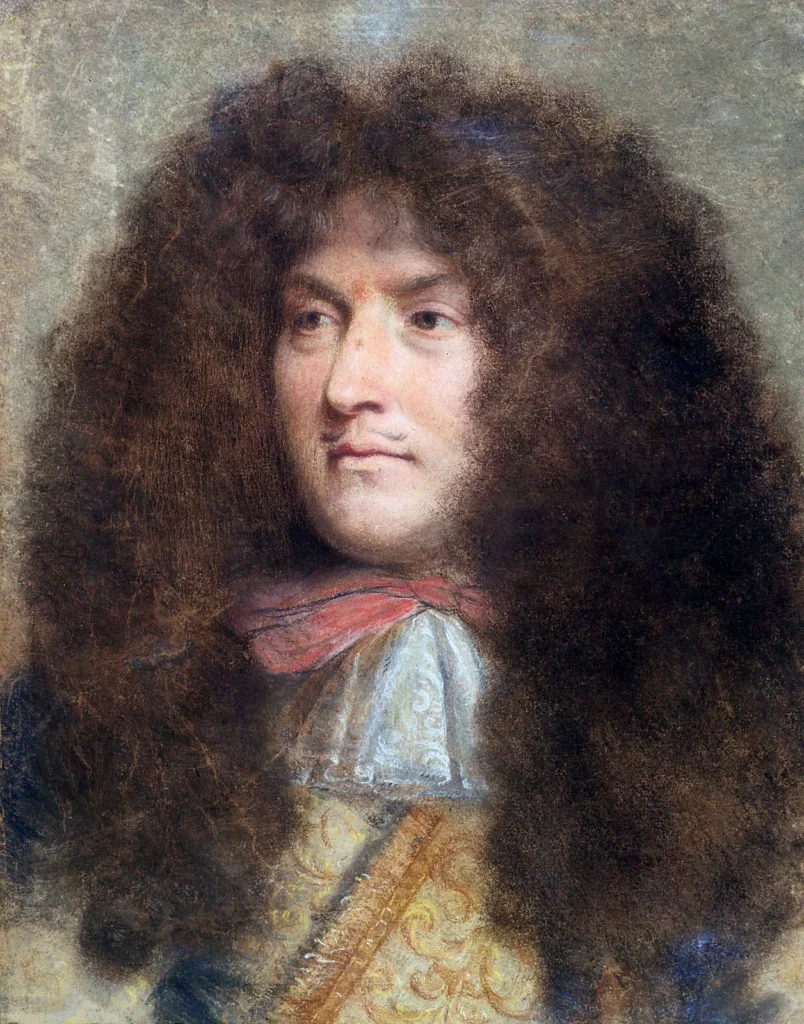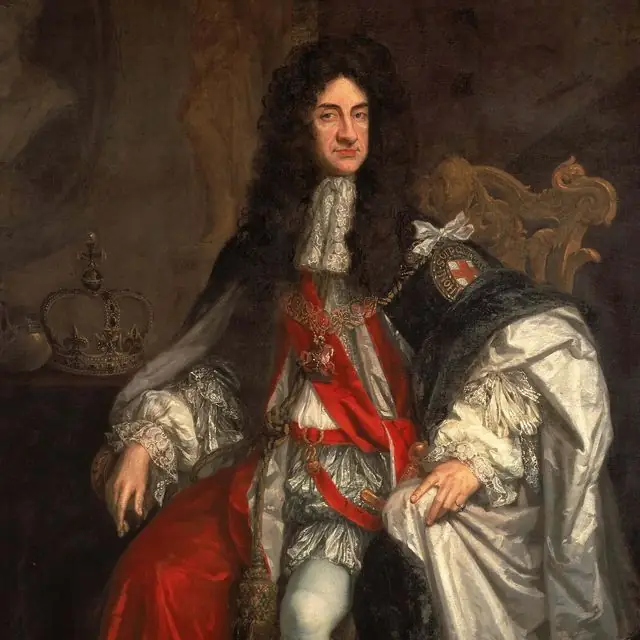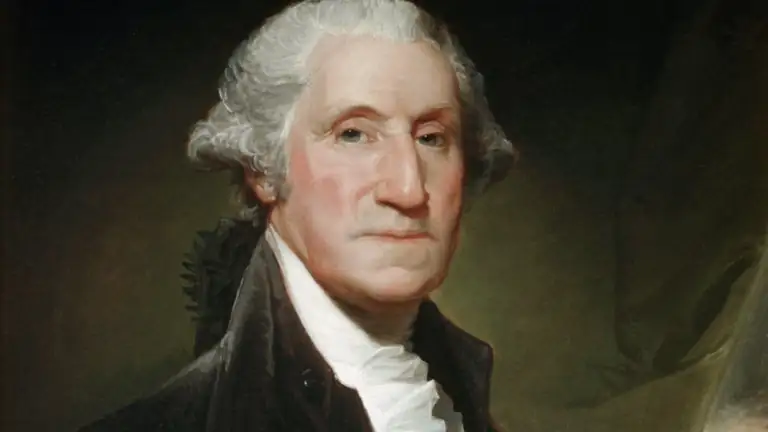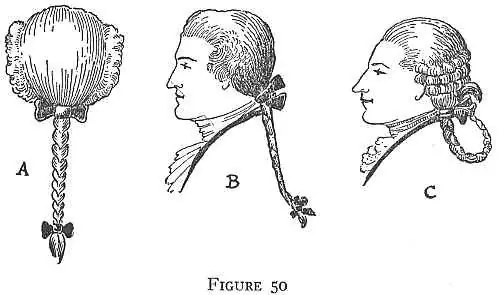If looking at the paintings and pictures of the past you find yourself wondering “What’s up with all these men wearing white wigs?” – we have an answer for you. Even though today, such a fashion may seem strange, in the late 17th and early 18th century a man wearing a wig was high fashion. They were meant to show the status, yet, they also helped to cope with a log of hygenic and cosmetical problems, such as lice and balding. Of course, there’s more history even to this seemingly strange hairstyling trend, so if you are interested don’t scroll past our article.

✅ AI Essay Writer ✅ AI Detector ✅ Plagchecker ✅ Paraphraser
✅ Summarizer ✅ Citation Generator
The Rise of The Wigs (Spoiler: Not a Horror Movie Title)
In the grand drama of 17th-century fashion, nothing made quite the statement like a well-fitted wig. Picture this: a time when a full, luscious hairline wasn’t just nice to have but a vital marker of social status and breeding. But as luck would have it, this was also the era when syphilis began to ravage Europe—more pervasive than the Black Plague—and with it came unsightly sores and the bane of every fashionable gentleman: patchy hair loss.
Enter the rise of the wig, not out of pure vanity but as a necessity. The trend caught fire when King Louis XIV of France, who began losing his hair as a teenager, famously employed 48 wigmakers to save his royal image. Not far behind, his cousin King Charles II of England put on wigs to hide his premature greying—another silent whisper of syphilis. What started as a royal remedy soon trickled down through the courtiers to the busy streets of the merchant class.
These wigs, or perukes, were quickly becoming a status symbol, an emblem of wealth. They came with a hefty price tag, making them accessible only to those who could part with a week’s wages (which was 25 shillings in London) — or for the nobles, the cost of a small fortune. The term ‘bigwig’, meaning a very important person, was coined in this era, highlighting the extravagance associated with these voluminous hairpieces. After all, owning such a hairstyle could cost somewhere around $10,193 if we convert it to today’s currency.
Crafted from horse, goat, or even human hair, wigs were practical too. They were easier to maintain than actual hair, especially considering the hygiene of the time. Think about it, no need to wash it and comb it every day (though with animal hair wigs lice were a problem). A wig could be sent off to the wigmaker for a thorough delousing, sparing the wearer from the tedious and less effective process of treating their hair. So, while wigs may seem like just an eccentric relic from the past, they were, in fact, a stylish solution to a rather itchy problem in a time when appearances were everything and cleanliness was, well, quite challenging.
Who Wore Them and Who Didn’t
As a result of the high price and the fact that they were made fashionable by royalty, wigs weren’t for everybody. In British colonial and early American society, if you glanced at paintings or sat in on political discussions, you’d see a sea of white-haired gentlemen, many of whom were likely adorned with wigs. This was especially true before the American Revolution, where wigs were seen as symbols of nobility and wisdom.
Interestingly, despite the common image of George Washington with white hair, he never actually wore a wig. He belonged to the unique club of redhead presidents and chose to powder his own hair instead—a sign of wealth and fashion at the time. However, the next four U.S. Presidents—John Adams, Thomas Jefferson, James Madison, and James Monroe—definitely embraced the wig-wearing trend.
Across the continent, while many British men flaunted their perukes, women also partook in this trend, though not as extensively as in France. Think of Marie Antoinette and her extravagant hairstyles, which were often wig-enhanced.
Military officers (surprisingly) had a complicated relationship with wigs. While some British officers wore them, these were not the elaborate styles shown off by the upper classes but specific military “campaign wigs,” like the short, practical Ramillies wig. This style, named after a British victory, featured a neat pigtail or “queue,” and while it started with real hair, fake queues soon became the norm.
On the other hand, enlisted soldiers didn’t enjoy the same privileges. If their hair was long enough, they braided it or used fake plaits tied with ribbons and held together with grease or tallow. Interestingly, they had to pay for their own powdering flour, which was deducted from their wages—a stark contrast to the luxurious, often bug-infested wigs of their superiors. Thus, while wigs symbolized status and style for some, they remained out of reach for the common man, as a testament to a clear divide in 18th-century fashion and social standing.
Why Men Kept On Powdering Their Wigs
So, as we have established, men wore wigs. And, most of the time they were white because of all the power they put in it. But why did they do all of that in the first place?
Despite their grand appearance, these wigs were a nightmare to keep fresh—they trapped dirt and developed a pretty nasty smell. That’s where hair powder came into play. Originally made from flour or starch, this powder could be mixed with various dyes to match personal tastes or fashion trends. To overcome the odor issue, the powder was often scented with delightful smells from roots and flowers like orange blossoms and lavender. So, not only did it keep the wigs looking good, but it also made them smell much nicer.
As time went on, white became the go-to color for hair powder among the high society set. Why white, you ask? Well, it had a way of giving a distinguished, mature look to the wearer. Usually, more mature (or older) meant higher status too. On lighter hair, it enhanced the blondness, and on darker shades, it added a distinguished grey tone. So next time you see a portrait of a man from the past with a powdery wig, remember—it was part fashion, part necessity.
Why Did Wigs Go Out of Fashion
Just as quickly as wigs climbed to the height of fashion, they took a sharp tumble out of vogue. with the Age of Enlightenment, a time when the values of reason and equality began to shine brighter than the sheen of a well-powdered wig, educated men started to throw their support behind the common man’s plight. Thus, with the rise of the bourgeoisie, putting on extravagant wigs became seen as out of touch.
In Revolutionary France, wigs became tangled up with the aristocracy—a group that wasn’t exactly popular (at least to say), especially as their leaders often met their fate under the guillotine’s blade. The bourgeoisie, keen to distance themselves from the nobility, ditched the wigs, which increasingly came to symbolize deception and excess. Originally worn to cover up the unsightly effects of syphilis, wigs began to be viewed suspiciously, as if hiding something more than bald patches.
The final nail in the coffin came with the Hair Powder Act of 1795. Enacted during the tenure of William Pitt the Younger, this law imposed a tax on hair powder, making wig-wearing even more of an expensive proposition. Unless you were royalty, clergy, or could afford the hefty certificate cost—about $122 in today’s money—maintaining this fashionable statement became impractical.

So, where did all the wigs go? Some still survive in museums like London’s Victoria & Albert Museum, but they’re rare, as preserving them isn’t as easy as it may seem. While you might still see wigs in courtrooms or period dramas, their role today is more about tradition and theatrical flair than fashion necessity. Who knows, though? With fashion’s cyclical nature, we might just see the grand return of men wearing big white powdered wigs.
FAQ
Follow us on Reddit for more insights and updates.










Comments (0)
Welcome to A*Help comments!
We’re all about debate and discussion at A*Help.
We value the diverse opinions of users, so you may find points of view that you don’t agree with. And that’s cool. However, there are certain things we’re not OK with: attempts to manipulate our data in any way, for example, or the posting of discriminative, offensive, hateful, or disparaging material.